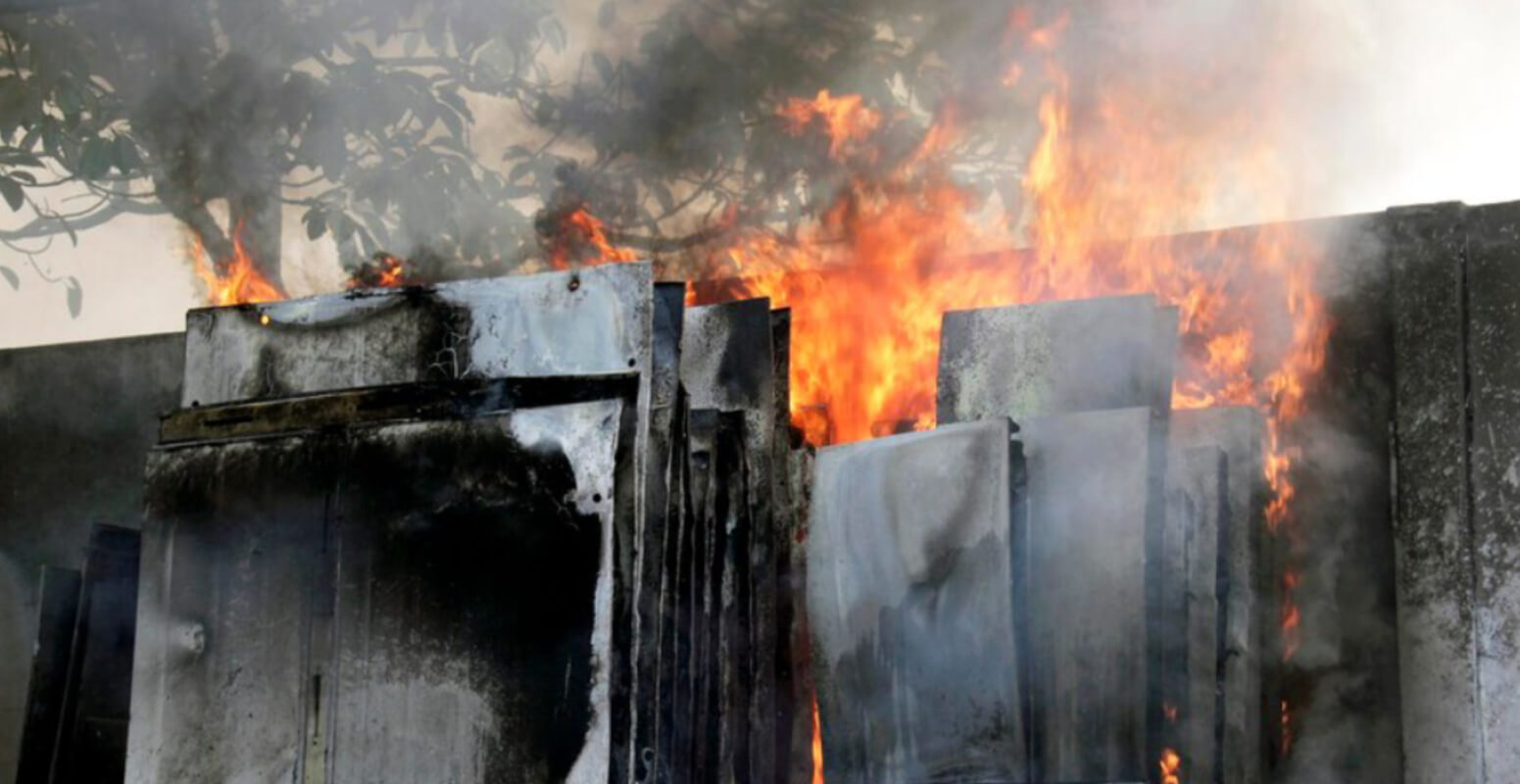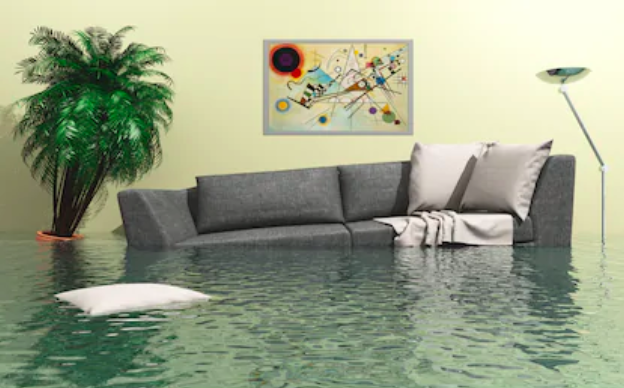In Grapevine, water damage doesn’t always come crashing through your door. Sometimes, it creeps in. Quiet. Slow. Hidden. And by the time it shows itself, it’s already done real damage. It’s not the obvious flood from a storm or the pipe that bursts in front of you — it’s the water behind the wall, under the tile, or soaked into your flooring that you didn’t know about until it’s too late. That’s the kind of water that quietly destroys homes in this region.
The danger in water damage cleanup isn’t the water you see. It’s the moisture you don’t. A pipe leaks behind a bathroom wall, and while everything looks dry, water is seeping into studs, insulation, and subfloor. A shower & tub overflow may only leave a wet rug on the surface, but beneath the floor, wood is warping, adhesive is failing, and mold is growing. What’s more frustrating? Most homeowners won’t know the full extent until flooring starts buckling or drywall starts peeling.
Grapevine has a mix of older homes and newer builds, and both bring their own challenges. Older plumbing systems are more prone to leaks and failures, and newer homes often use materials that trap moisture rather than allowing it to breathe. Either way, when a water pipe break occurs — whether in a slab, crawlspace, or ceiling — it becomes a race against time. The longer it’s unnoticed, the more extensive the damage becomes.
This is exactly where floor water damage takes root. A minor leak under the kitchen sink, a missed appliance leak cleanup, or a worn seal on a washing machine can flood a room without ever appearing dramatic. You clean the surface, but the water’s already soaked beneath your laminate or hardwood. It starts swelling the subfloor. Over a few days, the flooring separates. Over a few weeks, it molds.
Moisture that enters walls through a roof leak after a Grapevine storm travels vertically and horizontally — affecting framing, insulation, outlets, and sometimes HVAC systems. Water makes its way into ductwork, and now you’re facing a hidden health hazard that extends throughout the house. That’s why a proper storm and wind damage cleanup isn’t just about roofing and exterior checks. It must include attic insulation, ceiling joists, and internal wall cavities.
Another issue that strikes unexpectedly is pressure-related pipe failure. After heavy storms, shifts in soil or sudden temperature changes can cause a main water line break or water line break beneath the home. The result? Slow flooding from below. The signs might not appear until the baseboards swell or tile grout cracks. By then, your flooring is compromised and the walls are absorbing water. When that happens, structural restoration is inevitable.
If a burst pipe damage cleanup isn’t handled immediately and correctly, water doesn’t just sit — it migrates. It travels through the path of least resistance, soaking everything in its path. It might begin in the upstairs bathroom and end up saturating a hallway closet or downstairs pantry. Without proper tracing, you’ll miss entire sections of damage. That’s why seasoned restoration teams in Grapevine rely on thermal imaging and deep moisture testing to catch what the eye can’t.
One overlooked source of water intrusion in this area is HVAC systems. Summer in Texas means long hours of cool air — and when condensation lines clog or malfunction, you’re left needing hvac discharge line repair. The water may drip for days, damaging insulation, framing, and nearby drywall. By the time someone notices, it’s often far beyond a quick dry-out.
Drainage problems are another culprit. A clogged drain overflow during a heavy rain, especially in laundry rooms or basements, can introduce water that looks minimal — but causes serious damage over time. When drains backup, they can also trigger pressure buildup, forcing water into unsealed gaps in flooring or even behind fixtures.
In kitchens and bathrooms, a kitchen sink overflow, bathroom sink overflow, or toilet overflow cleanup incident might seem contained. But remember, these rooms are filled with hidden spaces — under cabinets, behind appliances, beneath tile — that all trap water. If a plumbing overflow cleanup is incomplete, those materials begin breaking down from the inside. Odors follow. Then discoloration. Then microbial growth.
Grapevine homeowners also experience frequent issues with pipe leak cleanup service jobs that were done too late. Small leaks may not be dramatic, but they’re just as destructive as full-on breaks. And if water sits long enough without full water extraction & removal, you’re stuck replacing walls, insulation, flooring, and cabinetry.
In commercial or multi-unit properties, these water events get even more complicated. If a leak begins in an upper unit or shared wall, it may not reveal itself until it’s spread into common areas or adjacent units. That’s how one missed broken water pipe repair becomes a building-wide problem, and why comprehensive inspections are critical after even small events.
Then there’s storm season — when outside water enters through windows, doors, or foundation gaps. What looks like flood damage cleanup in one room may actually be water that has migrated throughout the lower level of a home. During these storms, outside pressure often compromises foundation walls, pushing water inward through small gaps. Without inspection, you’re not just dealing with water. You’re dealing with contaminated runoff, which sometimes requires sewage removal & cleanup depending on what backed up.
And fire? Water’s just as dangerous after a fire as the flames were. In fire damage restoration jobs, fire departments often leave homes soaked. That water settles into the same cracks, flooring, and structure that the fire weakened. So now you need fire damage cleanup, smoke damage cleanup, and a complete structural dry-out before reconstruction can begin.
What makes water damage so expensive in Grapevine is that people act late — not out of carelessness, but because the signs are subtle. You might smell something off before you see it. You might feel soft spots in the flooring before anything looks wrong. And by then, the price of inaction is already multiplying.
That’s why working with a reliable water damage restoration company matters. They’re not there just to dry a surface. They’re there to investigate. To test. To track where the water came from, where it went, and what it left behind. They know that emergency water restoration doesn’t stop when the fans turn on — it stops when everything is dry, safe, and clean behind the walls.
Real professionals don’t just clean up. They stop future damage from happening. That means checking for trapped moisture behind baseboards. Inspecting insulation. Confirming every part of the flooring is moisture-free. Looking under appliances. Testing ceilings. Verifying safety around HVAC systems.
In Grapevine, the most expensive water damage is almost always the one that hides. So don’t wait for signs. If your home has seen a leak, overflow, storm, or backup — even if it seems minor — get it inspected. Because what you can’t see is exactly what water is counting on.

 Get To Know Us
Get To Know Us








 We Offer Financing
We Offer Financing



